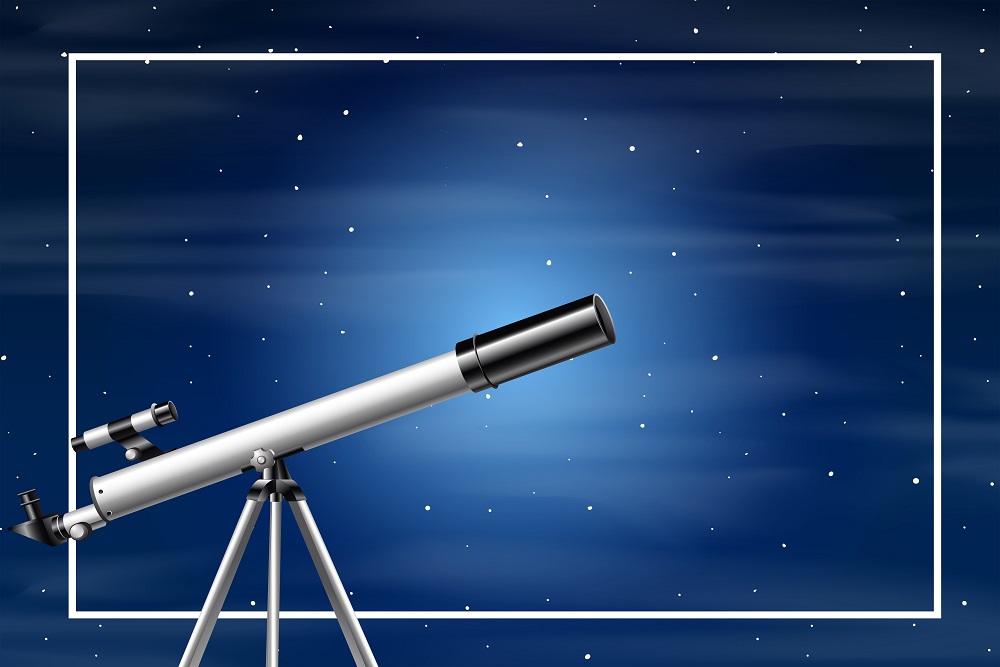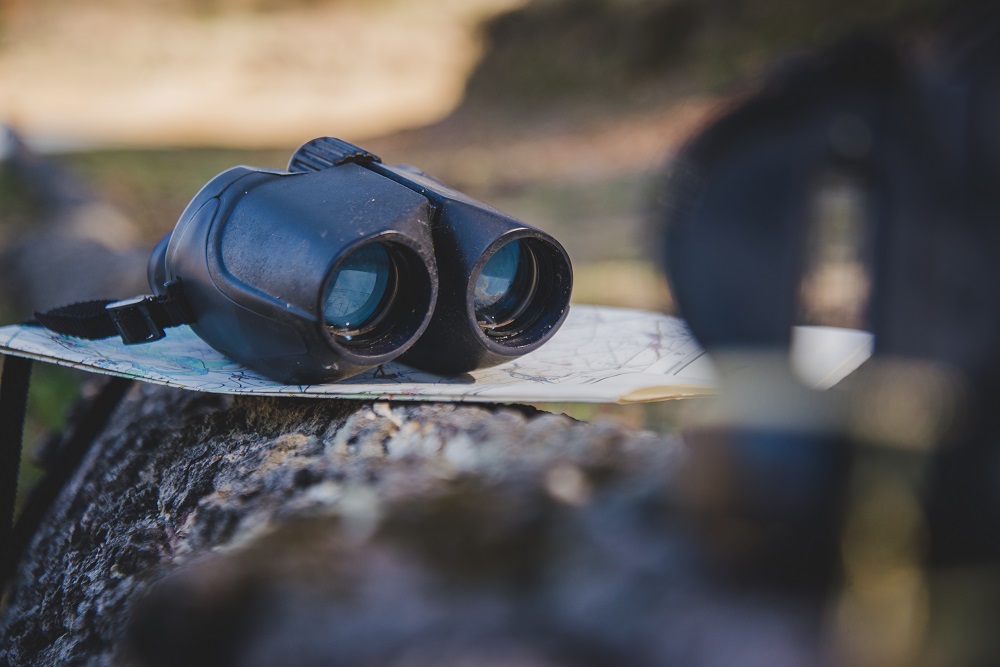Why Prisms are Used in Binoculars?
March 2023
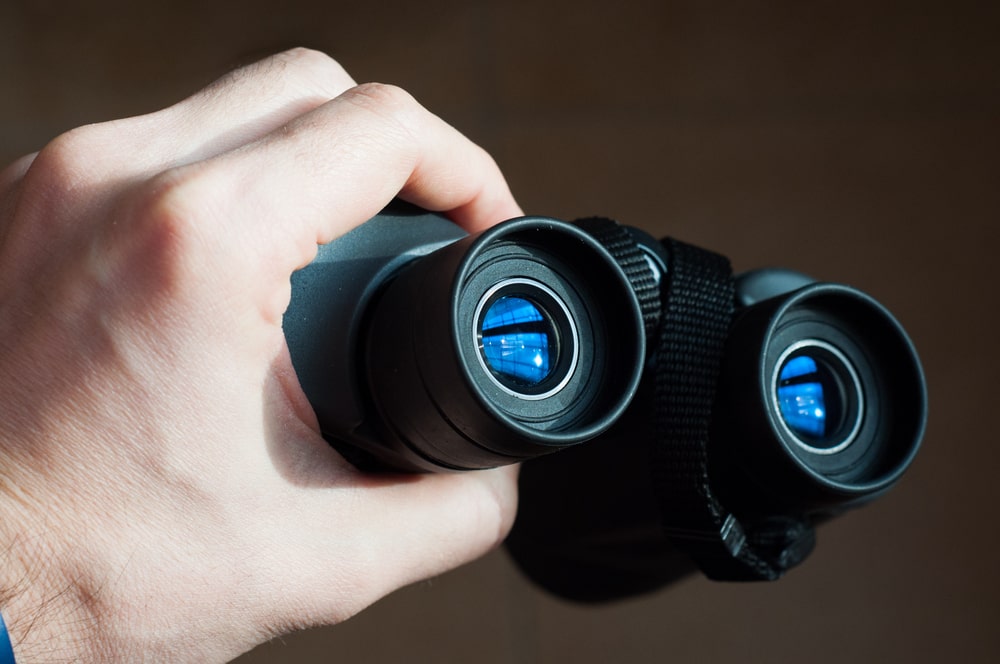
Prisms are transparent objects made of glass or another transparent material properly fashioned with plane faces and angles to reflect light. Internal reflection can modify the direction of light, which is why prisms are used in binoculars.
Binoculars provide users with a three-dimensional vision, in contrast to a (monocular) telescope, since each eyepiece presents a slightly distinct image to each viewer’s eye, and the parallax gives the visual cortex the ability to generate a sense of depth.
Depending on the use, prisms can take on various shapes and forms. The Porro prism, for instance, is used in various optical viewing devices, including periscopes, binoculars, and monoculars. It is composed of two prisms that are positioned to invert and reverse an image.
Prisms Vs. Mirrors
Here are different reasons why prisms are used in optical viewing devices instead of mirrors:
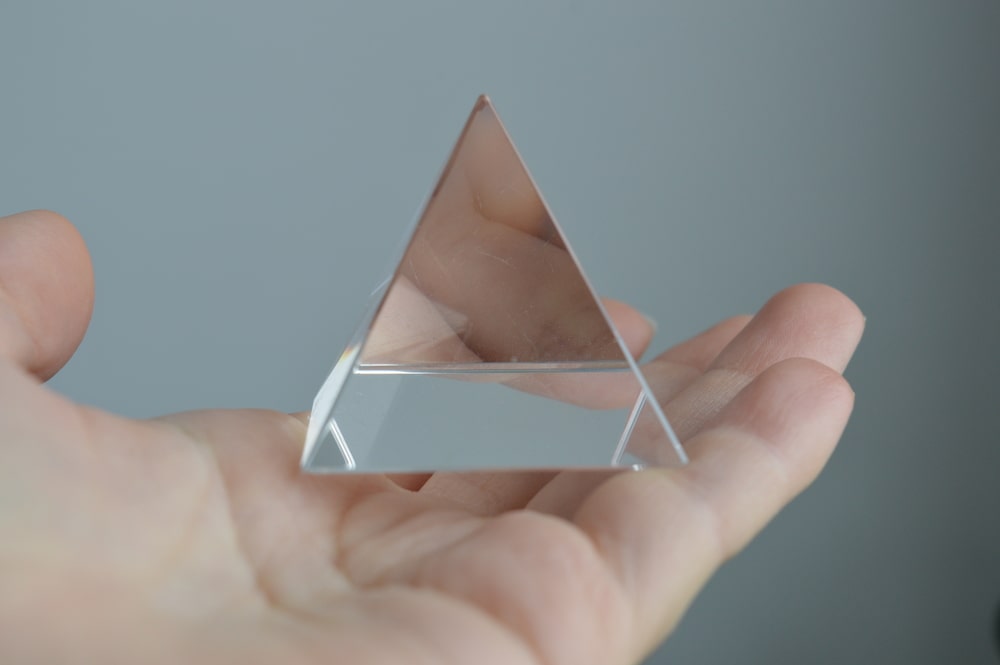
- TIR (total internal reflection) is higher in prisms than in mirrors. As a result, it offers greater optical benefits. Mirrors frequently cause reflection distortion, which lowers the quality of the picture.
- Prisms engage in complete internal reflection, where the intensity of the incident light is conserved. In contrast, mirrors always absorb a portion of the light, reducing the intensity of the incident light.
- For greater reflection, prisms are used in binoculars instead of mirrors. Binoculars employ right-angled prisms in general. Prisms can improve reflection efficiency in binoculars by up to 95%.
- Total internal reflection (TIR), which prisms use, has advantages over the losses you’d anticipate from mirrors. Only around 95% of what is reflected by prisms at the proper TIR angles is reflected by mirrors. The refraction deformation that may occur when utilizing a glass-fronted, reflective-coated mirror is likewise avoided by prisms.
Reasons why prisms are used in binoculars-
Without a prism, the binocular produces inverted pictures. Binocular images are constructed using prisms to make them acceptable for human vision. Prisms also shorten the optical path of light, reducing the binoculars’ size.
Binoculars are magnifying tools that make an object appear larger than it is. A prism is a clear, well-polished optical device that bends light as it passes through its surfaces. There are two main uses for prisms in binoculars-
- The objective lens produces an image that is laterally inverted and upside-down. The prism makes the image upright and correctly oriented so that it is suitable for viewing with the human eye.
- A binocular’s length can be decreased by using prisms, which provides another benefit. The path of the light is shortened and bent by the prism, shrinking the binocular size.
Types of prisms used in the binoculars
Binoculars use the Porro prism and the Roof prism, two different prisms.
Porro prism:
Four 45-degree triangular reflecting surfaces make up the porro prism. Two porro prisms are used in binoculars at an angle. When light passes through a broad rectangular surface, the prism’s triangular faces experience complete internal reflection twice.
The light exits the rectangular surface in the opposite direction that it entered. When standing on their objective lenses, porro prism binoculars form the shape of an M because the objective lens and eyepiece are bent at a right angle.
Benefits of Porro prism:
- Brighter images due to increased light transmission
- Quick focusing
- Close focusing
- A wider field of vision.
Roof prism:
Two faces of a reflecting prism called a roof prism meet at a 90-degree angle. The name “roof prism” refers to how similar the junction is to a house’s roof. The light that entered the roof prism is divided into two portions. One part is reversed, and the other reflects through the two surfaces.
Roof prism binoculars have an H shape when standing upright because they are normally straight with the objective lens aligned with the eyepiece. The porro prism is preferred over the roof prism because it offers more contrast.
Benefits of Roof prism:
- Simple handling
- Close focus on more modern models
- Increased longevity due to fewer external moving parts
- Better power-to-weight ratio.
Varieties of binoculars
Here are some of the finest binoculars to choose from, as listed below:
Swift S8 (8 X 42):
The Swift S8 Black binocular incorporates rubber armoring, BAK4 Roof prisms, multi-coated lenses, a large field of view, and weatherproof construction. The Roof Prisms’ BAK4 optical glass construction preserves natural color, and the multicoated lenses increase transmission and image brightness.
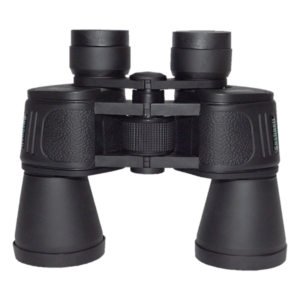
The center focus and diopter allow you to see small details as close as 14.8′ away, and the wide 6.8-degree angular field of view gives you a 365′ linear field of view at a 1000-yard distance. The best variety of roof prism is a BAK-4 prism because of its superior optical glass construction, which results in crisper images.
Additionally, BK-7 prisms are employed, typically in cheaper binoculars. These are adequate, though not as good as BAK-4 prisms. That is why prisms are used in binoculars, specially BAK-4 prisms in SWIFT S8 (8 X 42).
Sparrow (7 X 50):
The Sparrow offers bright, clear images because of its large objective lenses and multi-optics. The depth of field and contrast are rich thanks to the BAK4 Porro prism architecture. Rubber eyecups can be folded down for eyeglass wearers and are designed to maximize long-eye relief and keep stray light from leaking from your peripheral vision.
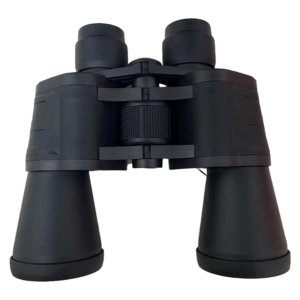
BAK4 Porro prisms are modifications of the common 90° prism used in pairs to shift and invert a beam. Porro prisms are frequently employed in binoculars, where they appropriately orient the image and slightly shorten the overall length of the binoculars.
Falcon F15 (15 X 70):
These binoculars are made with the needs of bird watchers in mind, and they include features like laser-etched markings and a sleek black finish that make them comfortable to handle and operate.
The XLT multi-coating specification on the Falcon binoculars provides exceptional light transmission for clear images even in dim lighting. These binoculars have BAK4 glass lenses that offer a clear view even when used in the rain or fog.
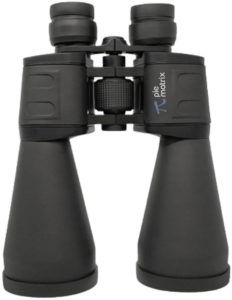
The Porro prism design offers a broad field of vision so that you can observe everything around you. You can see items up close without sacrificing clarity or brightness due to the large 70 mm objectives.
The Porro prism configuration offers a deep field of vision and excellent contrast to captivate viewers and immerse them in the observation experience.
High-contrast views that are bright, clear, and accurate in color fidelity are produced by combining optical coatings, prisms, and big 70 mm objectives.
Hawk (10 X 50):
The Hawk’s 50-millimeter objectives provide even greater light transmission capabilities and high magnification for superb close-up detail. This binocular excels in low-light situations like the dawn, dusk, and overcast days.
It is a fantastic choice to serve as an astronomical sky scanner and be useful for hunting or outdoor panoramic views. The exceptionally wide 67.4 degrees of Apparent Angle of View (AAoV) is highly appreciated here.
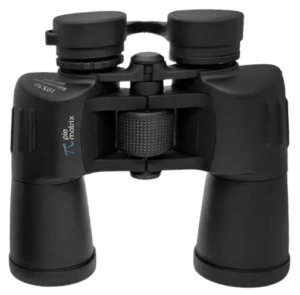
More light will be transmitted to the full field of view due to the higher refractive index rate and the complete, circular shape of the exit pupil. This will result in more vibrant and acute edges to your peripheral vision.
The BAK4 prism glass used in these binoculars enhances the projected image’s brightness and clarity. That is the reason why the BAK4 prisms are used in binoculars.
In a nutshell!
You can continue with Pie Matrix if you’re unsure who to put your faith in to get your binoculars. Depending on your interests, Pie Matrix has a wide selection of binoculars online india. We are a reputable business and would charge a very affordable fee.
Contact us if you still want to know more about why prisms are used in binoculars.

Why are Binoculars Waterproof?
